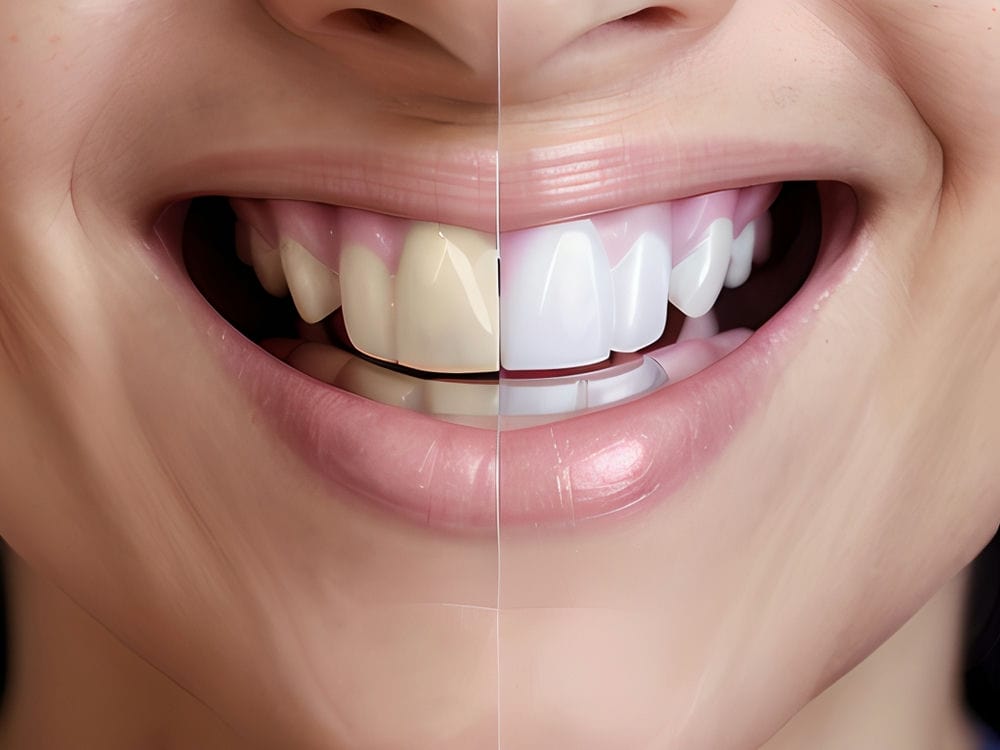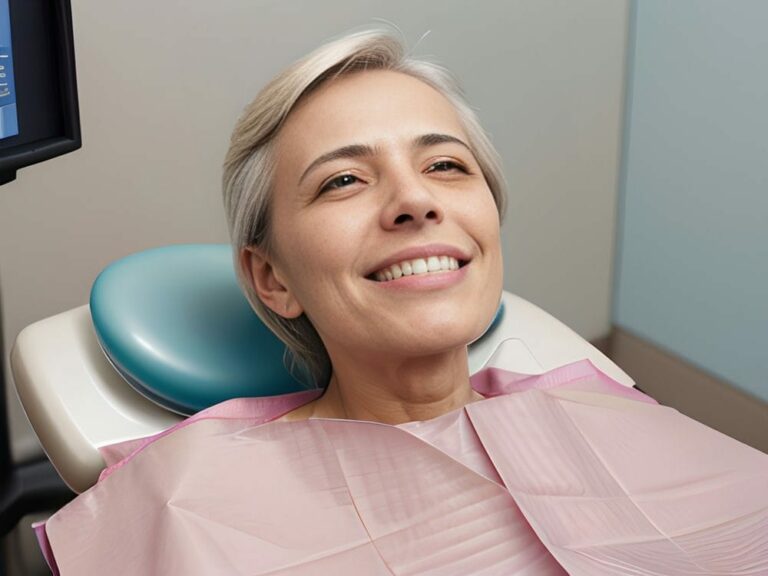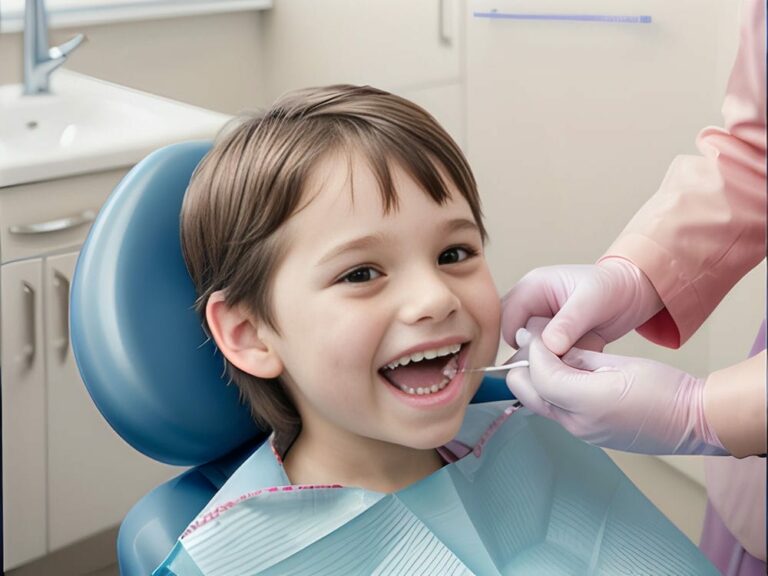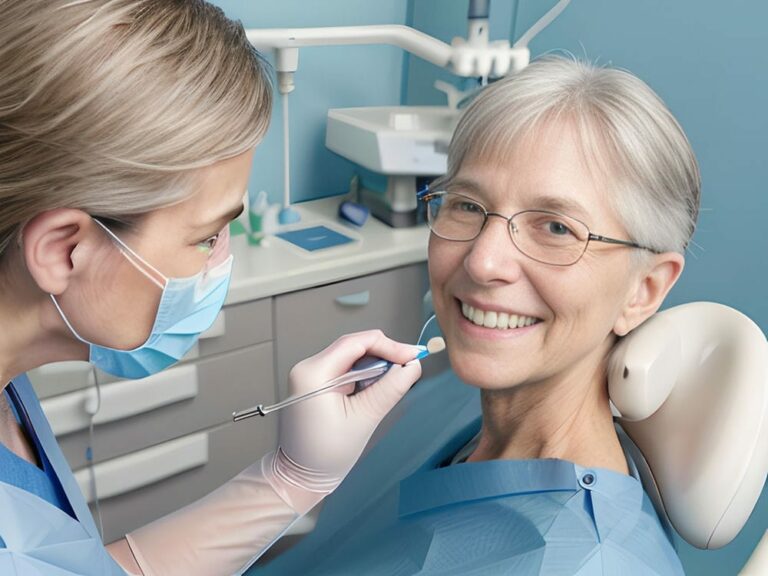Understanding the Oral Health Needs of Diverse Communities
Understanding the Oral Health Needs of Diverse Communities
In order to address the unique oral health needs of diverse communities, it is crucial to have a deep understanding of their specific challenges and concerns. Diverse communities can include populations with different cultural backgrounds, languages, socioeconomic statuses, and healthcare access. These factors greatly influence the oral health disparities that exist within these communities.
Cultural competence plays a significant role in addressing these disparities. Different cultures may have distinct beliefs, practices, and attitudes towards oral health. For example, some communities may prioritize preventive care and regular dental check-ups, while others may view dental care as a last resort for emergency situations only. By understanding these cultural nuances, oral healthcare providers can tailor their approach to better meet the needs of diverse communities.
Access to dental care is another critical factor influencing the oral health of diverse communities. Limited access to affordable and culturally sensitive dental services can prevent individuals from seeking timely preventive or restorative treatments. This lack of access can contribute to higher rates of untreated dental diseases and poorer overall oral health outcomes within these communities.
Healthcare disparities further exacerbate the challenges faced by diverse communities in accessing quality dental care. Factors such as income inequality, geographic location, language barriers, and discrimination all contribute to disparities in healthcare access. Recognizing and addressing these disparities is essential to ensure that everyone has equal opportunities for optimal oral health.
By gaining a deeper understanding of the oral health needs specific to diverse communities, healthcare providers can develop more effective strategies for prevention, education, and treatment. Cultural competence enables providers to deliver care in a way that is respectful, inclusive, and tailored to individual needs. Additionally, improving access to affordable and culturally sensitive dental services helps bridge the gap in oral healthcare disparities that exist among diverse populations. Ultimately, addressing these unique challenges will lead to improved overall oral health outcomes for everyone.
The Impact of Cultural Factors on Oral Health
Addressing the unique oral health needs of diverse communities requires a deep understanding of their specific challenges and concerns. Cultural competence is crucial in addressing oral health disparities among different populations. Different cultures may have distinct beliefs and practices regarding oral health, so healthcare providers must tailor their approach to meet the needs of diverse communities.
Access to dental care is another critical factor that influences the oral health of diverse communities. Limited access to affordable and culturally sensitive dental services can prevent individuals from seeking timely preventive or restorative treatments. This lack of access contributes to higher rates of untreated dental diseases and poorer overall oral health outcomes within these communities.
Healthcare disparities further exacerbate the challenges faced by diverse communities in accessing quality dental care. Factors such as income inequality, geographic location, language barriers, and discrimination all contribute to disparities in healthcare access. Recognizing and addressing these disparities is essential to ensure that everyone has equal opportunities for optimal oral health.
By gaining a deeper understanding of the unique oral health needs of diverse communities, healthcare providers can develop more effective strategies for prevention, education, and treatment. Cultural competence enables providers to deliver care in a way that is respectful, inclusive, and tailored to individual needs. Additionally, improving access to affordable and culturally sensitive dental services helps bridge the gap in oral healthcare disparities among diverse populations. Ultimately, addressing these unique challenges will lead to improved overall oral health outcomes for everyone.
Promoting Oral Health Education in Diverse Communities
Promoting oral health education is crucial in addressing the unique oral health needs of diverse communities. Many individuals from different cultural backgrounds may have limited oral health knowledge, which can contribute to poor oral health outcomes. By providing culturally appropriate and accessible education, healthcare providers can empower individuals to make informed decisions about their oral health.
One key aspect of promoting oral health education is raising awareness about the importance of preventive care. Many diverse communities may not prioritize regular dental check-ups or practice proper oral hygiene behaviors. By educating individuals about the benefits of preventive care, such as regular brushing, flossing, and professional cleanings, healthcare providers can help instill positive oral health behaviors.
Furthermore, it is essential to address cultural beliefs and practices that may impact oral health behaviors. Some cultures may have traditional remedies or rituals related to oral care that may not align with modern dental practices. By understanding and respecting these cultural beliefs, healthcare providers can work collaboratively with individuals to find a balance between tradition and evidence-based dental care.
By promoting oral health education in diverse communities, healthcare providers can improve overall oral health outcomes. Empowering individuals with knowledge about proper oral hygiene practices and preventive care can lead to healthier teeth and gums. Additionally, addressing cultural beliefs and practices helps ensure that educational efforts are effective and respectful of diverse backgrounds.
In summary, promoting oral health education is essential in addressing the unique needs of diverse communities. By increasing knowledge about proper oral hygiene practices and preventive care, healthcare providers can empower individuals to make informed decisions regarding their oral health. Additionally, addressing cultural beliefs and practices ensures that educational efforts are inclusive and respectful. Ultimately, by promoting oral health education in diverse communities, we can strive towards improved overall oral health outcomes for everyone.
Overcoming Barriers to Accessing Dental Care
Addressing the unique oral health needs of diverse communities requires overcoming barriers to accessing dental care. Many individuals in these communities face challenges when it comes to receiving regular dental check-ups and necessary treatments. These barriers can include limited access to affordable dental services, language barriers, lack of transportation, and cultural beliefs that may discourage seeking dental care.
One significant barrier is the lack of affordable dental services in many diverse communities. Dental insurance coverage may be limited or inaccessible for individuals, making it difficult for them to afford regular check-ups and treatments. This financial burden often leads to delayed or neglected oral health practices, which can result in more severe oral health issues in the long run.
Language barriers also play a role in preventing individuals from accessing dental care. Many diverse communities have non-English speakers who struggle to communicate with healthcare providers effectively. This language barrier can hinder their ability to understand oral health practices, receive proper diagnoses, and follow treatment plans. It is crucial for healthcare providers to have interpreters available or provide educational materials in multiple languages to ensure effective communication and understanding.
Cultural beliefs and norms can also create barriers to accessing dental care in diverse communities. Some cultures may hold beliefs that prioritize other aspects of health over oral health or rely on traditional remedies instead of seeking professional care. Overcoming these cultural barriers involves educating individuals about the importance of oral health awareness and addressing any misconceptions they may have about modern dental practices.
In conclusion (without using those words), addressing the barriers to accessing dental care is vital in reducing oral health inequalities among diverse communities. By providing affordable services, addressing language barriers, and respecting cultural beliefs, healthcare providers can help ensure that everyone has equal access to quality oral healthcare. Empowering individuals with the knowledge and resources needed will ultimately lead to improved overall oral health outcomes for all members of diverse communities.
Tailoring Oral Care Practices for Specific Cultural Groups
Tailoring Oral Care Practices for Specific Cultural Groups
To achieve oral health equity and improve the oral health status of diverse communities, it is essential to tailor oral care practices to meet the specific needs and cultural preferences of different cultural groups. By recognizing and understanding the unique factors that influence oral health behaviors within each community, healthcare providers can effectively address disparities in oral health outcomes.
One way to tailor oral care practices is by providing culturally sensitive education and outreach programs. These programs should consider the cultural beliefs, values, and norms of the community they are targeting. By delivering information in a way that resonates with individuals’ cultural backgrounds, healthcare providers can increase awareness about oral health issues and promote preventive measures. This can include using culturally relevant images, stories, or traditional practices that align with the community’s customs.
Additionally, incorporating traditional remedies into modern dental practices can help bridge cultural gaps and encourage individuals to seek professional oral health services. Many diverse communities have their own home remedies or traditional methods for addressing dental problems. By acknowledging and respecting these practices while also emphasizing the importance of professional care, healthcare providers can build trust and encourage regular check-ups.
Furthermore, partnering with community leaders and organizations is crucial in tailoring oral care practices for specific cultural groups. Engaging community members as advocates for oral health promotion can help overcome language barriers and dispel misconceptions about dental care. By working collaboratively with trusted individuals within the community, healthcare providers can establish long-lasting relationships built on mutual respect and understanding.
In conclusion (without using those words), tailoring oral care practices for specific cultural groups is vital in achieving equitable access to quality oral health services among diverse communities. By considering cultural beliefs and preferences, providing culturally sensitive education, incorporating traditional remedies when appropriate, and partnering with community leaders, healthcare providers can effectively address disparities in oral health outcomes and ensure that all individuals receive the care they need for optimal oral health.
Addressing Language and Literacy Challenges in Oral Health Promotion
Tailoring oral care practices for specific cultural groups is essential in addressing health disparities and improving oral health outcomes among minority populations and ethnic communities. By understanding the unique factors that influence oral health behaviors within each community, healthcare providers can effectively meet the specific needs and cultural preferences of diverse populations.
One way to tailor oral care practices is by providing culturally sensitive education and outreach programs. These programs should take into account the cultural beliefs, values, and norms of the targeted community. By delivering information in a way that resonates with individuals’ cultural backgrounds, healthcare providers can increase awareness about oral health issues and promote preventive measures. This can be done through the use of culturally relevant images, stories, or traditional practices that align with the community’s customs.
Incorporating traditional remedies into modern dental practices is another approach to bridge cultural gaps and encourage individuals to seek professional oral health services. Many diverse communities have their own home remedies or traditional methods for addressing dental problems. By acknowledging and respecting these practices while also emphasizing the importance of professional care, healthcare providers can build trust and encourage regular check-ups.
Partnering with community leaders and organizations is crucial in tailoring oral care practices for specific cultural groups. Engaging community members as advocates for oral health promotion helps overcome language barriers and dispel misconceptions about dental care. By working collaboratively with trusted individuals within the community, healthcare providers can establish long-lasting relationships built on mutual respect and understanding.
By tailoring oral care practices to meet the unique needs of different cultural groups, healthcare providers can address health disparities and ensure equitable access to quality oral health services among diverse communities. Through culturally sensitive education, incorporation of traditional remedies when appropriate, and partnerships with community leaders, disparities in oral health outcomes can be reduced, ultimately leading to improved overall oral health among minority populations and ethnic communities.
Collaborating with Community Organizations to Improve Dental Health
Tailoring oral care practices for specific cultural groups is essential in addressing health disparities and improving oral health outcomes among minority populations and ethnic communities. By understanding the unique factors that influence oral health behaviors within each community, healthcare providers can effectively meet the specific needs and cultural preferences of diverse populations.
One way to tailor oral care practices is by providing culturally sensitive education and outreach programs. These programs should take into account the cultural beliefs, values, and norms of the targeted community. By delivering information in a way that resonates with individuals’ cultural backgrounds, healthcare providers can increase awareness about oral health issues and promote preventive measures. This can be done through the use of culturally relevant images, stories, or traditional practices that align with the community’s customs.
Incorporating traditional remedies into modern dental practices is another approach to bridge cultural gaps and encourage individuals to seek professional oral health services. Many diverse communities have their own home remedies or traditional methods for addressing dental problems. By acknowledging and respecting these practices while also emphasizing the importance of professional care, healthcare providers can build trust and encourage regular check-ups.
Partnering with community leaders and organizations is crucial in tailoring oral care practices for specific cultural groups. Engaging community members as advocates for oral health promotion helps overcome language barriers and dispel misconceptions about dental care. By working collaboratively with trusted individuals within the community, healthcare providers can establish long-lasting relationships built on mutual respect and understanding.
By tailoring oral care practices to meet the unique needs of different cultural groups, healthcare providers can address health disparities and ensure equitable access to quality oral health services among diverse communities. Through culturally sensitive education, incorporation of traditional remedies when appropriate, and partnerships with community leaders, disparities in oral health outcomes can be reduced, ultimately leading to improved overall oral health among minority populations and ethnic communities.
Recognizing Oral Diseases and Disparities in Diverse Populations
Tailoring oral care practices to meet the unique needs of diverse communities is essential in addressing health disparities and improving oral health outcomes. One effective way to do this is by providing culturally sensitive education and outreach programs. These programs should be designed to resonate with individuals’ cultural backgrounds, taking into account their beliefs, values, and norms. By delivering information in a way that aligns with the community’s customs, healthcare providers can increase awareness about oral health issues and promote preventive measures.
In addition to culturally sensitive education, incorporating traditional remedies into modern dental practices can help bridge cultural gaps and encourage individuals to seek professional care. Many diverse communities have their own home remedies or traditional methods for addressing dental problems. By acknowledging and respecting these practices while also emphasizing the importance of professional care, healthcare providers can build trust and encourage regular check-ups.
Partnering with community leaders and organizations is crucial in tailoring oral care practices for specific cultural groups. Engaging community members as advocates for oral health promotion helps overcome language barriers and dispel misconceptions about dental care. By working collaboratively with trusted individuals within the community, healthcare providers can establish long-lasting relationships built on mutual respect and understanding.
By tailoring oral care practices to meet the unique needs of different cultural groups, healthcare providers can address health disparities and ensure equitable access to quality oral health services among diverse communities. Through culturally sensitive education, incorporation of traditional remedies when appropriate, and partnerships with community leaders, disparities in oral health outcomes can be reduced. This ultimately leads to improved overall oral health among minority populations and ethnic communities.
Implementing Culturally Appropriate Strategies for Oral Hygiene
To implement culturally appropriate strategies for oral hygiene, healthcare providers must be aware of the unique cultural practices and beliefs surrounding oral health within diverse communities. By understanding these cultural nuances, healthcare professionals can tailor their recommendations and interventions to better align with individuals’ values and preferences.
One key strategy is to provide education and information about oral hygiene in a way that resonates with the community’s cultural background. This may involve using language or dialects commonly spoken within the community, incorporating traditional storytelling or communication styles, and addressing oral health issues within the context of cultural norms and values. By doing so, healthcare providers can increase awareness about the importance of oral hygiene while respecting individuals’ cultural identities.
Another important aspect of implementing culturally appropriate strategies for oral hygiene is to recognize and acknowledge traditional remedies or practices that individuals may already be using within their communities. Rather than dismissing these practices as ineffective or irrelevant, healthcare providers should seek to understand them and find ways to integrate them into modern dental care when appropriate. This not only shows respect for individuals’ cultural heritage but also helps build trust and encourages individuals to seek professional care alongside their traditional practices.
By actively engaging community leaders and organizations in the development and implementation of culturally appropriate strategies for oral hygiene, healthcare providers can ensure that their efforts are effective and well-received. Community leaders serve as trusted sources of information and can help bridge language barriers, dispel myths or misconceptions about dental care, and encourage community members to adopt positive oral health behaviors. Collaborating with these leaders also fosters a sense of ownership among community members, leading to long-term sustainability of oral health initiatives.
In summary, implementing culturally appropriate strategies for oral hygiene involves tailoring education efforts to align with individuals’ cultural backgrounds, recognizing and respecting traditional remedies or practices, as well as collaborating with community leaders. By doing so, healthcare providers can promote equitable access to quality oral health services while honoring diverse cultures within the communities they serve.
Empowering Diverse Communities through Advocacy and Policy Changes
Addressing the unique oral health needs of diverse communities requires more than just implementing culturally appropriate strategies for oral hygiene. It also involves empowering these communities through advocacy and policy changes. By advocating for policies that prioritize oral health equity and access to care, healthcare providers can help address systemic barriers that prevent individuals from receiving the dental services they need.
One way to empower diverse communities is by partnering with community organizations and grassroots initiatives that are already working towards improving oral health outcomes. By collaborating with these organizations, healthcare providers can leverage their expertise and resources to create sustainable programs that address the specific needs of the community. This partnership also helps ensure that initiatives are culturally sensitive and responsive to the community’s preferences.
Advocacy efforts should also focus on addressing structural inequalities in access to care. This includes advocating for policies that expand insurance coverage for dental services, increasing funding for community health centers, and supporting workforce diversity within the dental profession. By advocating for these changes, healthcare providers can help reduce disparities in oral health outcomes and promote a more equitable distribution of resources.
By empowering diverse communities through advocacy and policy changes, healthcare providers can make a lasting impact on their oral health outcomes. This approach recognizes that addressing the oral health needs of diverse communities requires a comprehensive approach that goes beyond individual behavior change. By working together with community organizations and advocating for policy changes, healthcare providers can help create an environment where everyone has equal opportunities to achieve optimal oral health.
FAQs
Q: What are some unique oral health needs of diverse communities?,
A: Some unique oral health needs of diverse communities include language barriers, cultural beliefs, and limited access to dental care.,
Q: How do language barriers affect oral health in diverse communities?,
A: Language barriers can make it difficult for diverse communities to understand oral health information and instructions, leading to potential oral health issues.,
Q: How do cultural beliefs impact oral health in diverse communities?,
A: Cultural beliefs can influence oral health practices, such as traditional remedies or dietary habits, which may differ from mainstream dental recommendations.,
Q: What are some common oral health disparities among diverse communities?,
A: Common oral health disparities among diverse communities include higher rates of untreated tooth decay, gum disease, and oral cancer.,
Q: How does limited access to dental care affect oral health in diverse communities?,
A: Limited access to dental care can result in delayed treatment, exacerbating oral health problems and leading to more severe dental conditions among diverse communities.,
Q: How can oral health providers address the needs of diverse communities?,
A: Oral health providers can address the needs of diverse communities by providing culturally sensitive care, offering language interpretation services, and promoting oral health education tailored to specific cultural backgrounds.,
Q: What role does oral health education play in addressing the needs of diverse communities?,
A: Oral health education plays a crucial role in addressing the needs of diverse communities by raising awareness about oral hygiene practices, preventive care, and the importance of regular dental check-ups.,
Q: How can dental professionals overcome language barriers in diverse communities?,
A: Dental professionals can overcome language barriers in diverse communities by utilizing professional interpreters, providing multilingual educational materials, and employing culturally diverse staff members.,
Q: What are some strategies for improving access to dental care in diverse communities?,
A: Some strategies for improving access to dental care in diverse communities include increasing the number of culturally competent dentists, expanding community dental clinics, and advocating for policy changes to enhance affordability and availability of dental services.,
Q: How can community outreach programs help address oral health disparities in diverse communities?,
A: Community outreach programs can help address oral health disparities in diverse communities by providing dental screenings, education, and resources to underserved populations, promoting early intervention and preventive measures.

















